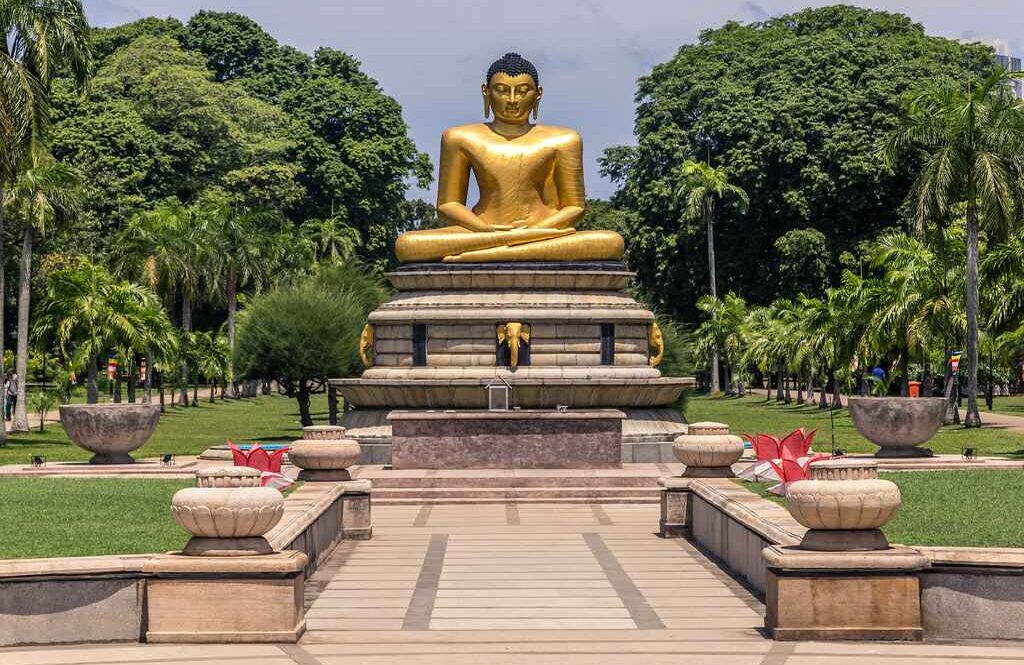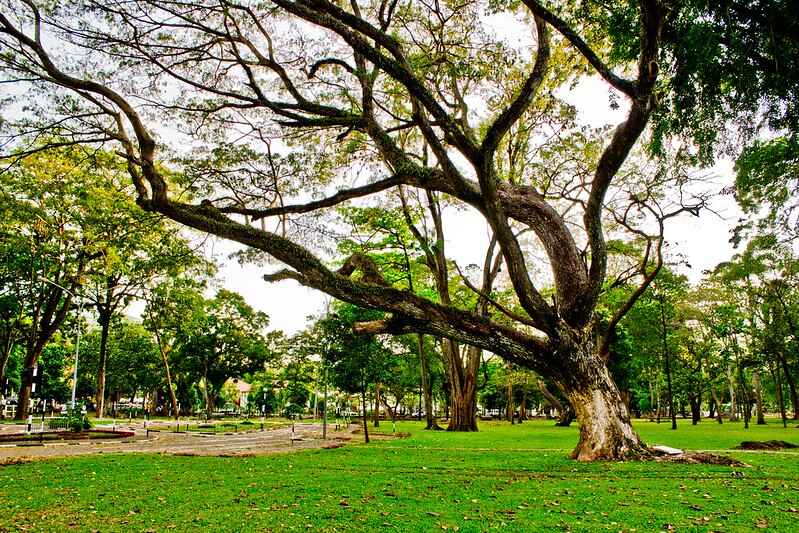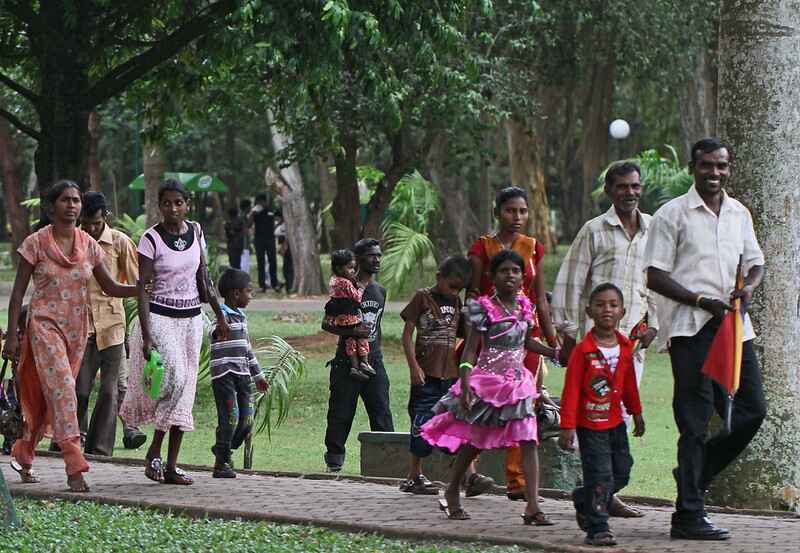


Colombo, often referred to as the “Garden City of the East,” is a vibrant mix of colonial charm, urban bustle, and tropical beauty. While most travelers are drawn to its beaches and cultural landmarks, one of the most underrated yet captivating gems of the city is Viharamahadevi Park. Tucked amidst some of Colombo’s busiest roads and iconic buildings, this lush oasis offers a peaceful retreat where locals and visitors alike can slow down, relax, and soak in the serenity of nature. Whether you’re planning a leisurely walk, a family picnic, or simply a quiet moment under the shade of tall trees, Viharamahadevi Park deserves a special place on your Sri Lanka itinerary.
Viharamahadevi Park holds the distinction of being the oldest and largest urban park in Colombo. Originally established during the British colonial era, the park was initially named Victoria Park after Queen Victoria. The land on which it was built was generously donated by philanthropist Captain Charles Henry de Soysa, one of the most prominent figures in Sri Lanka’s colonial history. Over the decades, the park evolved in both purpose and identity. During World War II, it was used by the British Army and the 17th Brigade of the Australian Army. From 1927 to 1995, it even served as a venue for first-class cricket matches, hosting international teams such as the touring English side in the 1930s.
Following Sri Lanka’s independence, the park was renamed in honor of Queen Viharamahadevi, the mother of the revered King Dutugemunu. Today, the park remains a symbol of national pride and cultural legacy, featuring a towering statue of Lord Buddha, landscaped gardens, vibrant fountains, and children’s play zones. Despite facing years of neglect in the late 20th century, a significant restoration effort in 2013—driven by preparations for the Commonwealth Heads of Government Meeting—brought the park back to life with renewed beauty and modern amenities.

Viharamahadevi Park is a year-round destination thanks to Colombo’s tropical climate, but some months offer a better experience than others.
Ideal months: December to April and October to early June (dry and pleasant weather).
Avoid visiting from June to September, when monsoon rains are common.
Best times of day: Early mornings and late afternoons are perfect for avoiding the heat and crowds, and they offer stunning light for photography.
Thanks to its central location, reaching Viharamahadevi Park is simple and affordable.
Tuk-tuks (three-wheelers) are the most popular and budget-friendly option for short distances.
Public buses run frequently and stop near the park’s entrances.
Taxi services like Kangaroo Cabs and Ace Cabs are widely available across the city.
If staying nearby, walking is pleasant and allows you to take in some of Colombo’s iconic architecture.
Whether you’re looking for luxury or budget stays, Colombo offers a wide range of accommodation options near the park.
Luxury: Cinnamon Grand Colombo, Cinnamon Red Hotel
Mid-range: Renuka City Hotel, Juliana Hotel
Budget-friendly: Backpack Lanka Hostel, Bunkyard Hostels
Staying nearby also gives you access to Colombo’s other top attractions, shopping streets, and restaurants.
Visiting Viharamahadevi Park is easy on the wallet and traveler-friendly.
Entry fee: Around 20 LKR for adults; children enjoy discounted rates.
Opening hours: The park is open daily from 6:00 AM to 8:00 PM.
These extended hours make it easy to fit a visit into your day, whether you prefer a morning walk or a relaxing evening.
Viharamahadevi Park is centrally located in Colombo, which makes it an ideal starting point to explore some of the city’s most iconic landmarks. From historic temples to cultural monuments and modern architectural wonders, there’s much to discover just a short walk or drive from the park. Here’s a deeper look at the must-visit attractions in the area:
Just across from Viharamahadevi Park lies the Colombo National Museum, the largest and most significant museum in Sri Lanka. Established in 1877 by the British Governor Sir William Henry Gregory, the museum is housed in a beautiful Italianate-style building and showcases a comprehensive collection of Sri Lanka’s cultural heritage.
Inside, visitors can explore galleries filled with ancient artifacts, religious sculptures, colonial-era antiques, traditional masks, palm-leaf manuscripts, and the regalia of Kandyan kings, including the royal throne and crown. Each gallery is organized by theme, making it easy to trace the island’s evolution through its prehistoric, medieval, and colonial periods.
Whether you’re a history enthusiast or a curious traveler, this museum offers invaluable insight into Sri Lanka’s rich past. It is open daily from 9:00 AM to 5:00 PM, and the quiet, well-curated environment makes it perfect for a reflective morning visit.
Approximately a 10-minute walk from the park is Gangaramaya Temple, one of Colombo’s most celebrated Buddhist temples. It is not only a place of worship but also a vibrant cultural complex that blends Sri Lankan, Indian, Chinese, and Thai architectural influences.
Established in the late 19th century by the monk Hikkaduwe Sri Sumangala Nayaka Thera, the temple began as a small monastery and has since grown into a multifaceted complex featuring a main shrine, assembly hall, museum, library, and a sacred Bo tree. The temple also plays a central role in the annual Navam Perahera, one of Colombo’s grandest Buddhist processions.
The temple’s museum showcases a vast array of items including old coins, religious artifacts, ivory carvings, and vintage automobiles, creating a unique blend of spiritual and secular collections. It is a living example of how tradition and modernity coexist in Sri Lanka’s cultural landscape.
Visitors are welcome daily, but respectful attire is required, and shoes must be removed upon entering the inner sanctums.
Located in the nearby Cinnamon Gardens area, Independence Memorial Hall is a striking national monument built to commemorate Sri Lanka’s independence from British rule in 1948. Designed in traditional Kandyan architecture, the open-air structure is supported by stone pillars carved with images of ancient Sri Lankan warriors, symbolizing the country’s long fight for freedom.
The monument sits in Independence Square, a popular area for joggers, families, and visitors who enjoy the peaceful surroundings and well-maintained gardens. At the center of the hall stands a statue of the first Prime Minister of Sri Lanka, D.S. Senanayake, whose leadership was instrumental during the transition to independence.
Independence Memorial Hall is not just a historic site—it’s a gathering place for national celebrations, cultural events, and peaceful recreation, making it an essential stop for anyone interested in Sri Lankan identity and heritage.
Another architectural gem near Viharamahadevi Park is the Colombo Public Library, one of the oldest and largest public libraries in the country. Located just next to the Colombo Town Hall, the library was established in 1925 and has served generations of readers and researchers.
Its neoclassical façade is reminiscent of colonial-era civic buildings, and inside it houses over 200,000 volumes of books, magazines, and newspapers in English, Sinhala, and Tamil. It offers dedicated reading rooms, children’s sections, and digital resource centers, making it a valuable educational hub in the city.
While it primarily serves the local population, travelers are welcome to step in and explore the building’s historic charm, especially if they appreciate old architecture or want a quiet place to rest.
Standing tall on the Colombo skyline, the Lotus Tower (Nelum Kuluna) is South Asia’s tallest tower at 356 meters (1,168 feet). Although slightly farther from Viharamahadevi Park—approximately a 15- to 20-minute drive—it is still a prominent attraction that draws visitors for its futuristic design and sweeping city views.
Shaped like a blooming lotus flower, the tower symbolizes purity and harmony in Sri Lankan culture. Inside, it houses observation decks, restaurants, conference halls, and shopping areas. The observation deck offers panoramic views of Colombo, the Indian Ocean, and surrounding suburbs, especially stunning at sunset or nighttime when the city lights come alive.
The tower also features LED light displays on its exterior that transform it into a dazzling nighttime landmark visible across Colombo.
It’s a great spot for photography, sightseeing, and even dining with a view. Visitors can buy tickets at the entrance, and guided tours are available to enhance the experience.
To make the most of your visit, keep the following tips in mind:
Wear comfortable shoes if you plan to explore the entire park.
Bring water, sunscreen, and a hat, especially during warmer months.
Pack a light snack or picnic if you’re coming with family or spending a few hours.
Visit early or late in the day for the best lighting, fewer crowds, and cooler temperatures.
Don’t forget your camera—the combination of colonial buildings, lush gardens, and serene sculptures is a photographer’s dream.

The world is wide — I’m here to explore it. One backpack, endless stories. Join me where maps end and magic begins.
© 2024 BackpackCouple. All Rights Reserved.